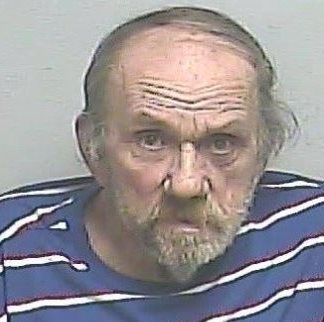The doctors at IMAC Regeneration Center of Paducah have seen patients from thousands of miles away for what could easily be described as innovative, and what some would say is groundbreaking.
Physicians and patients shared their stories Thursday night at the 2016 MidSouth Regenerative Medicine Conference at IMAC's office on James Sanders Boulevard. Doctors Matt Wallis, Sean McDonald, Vratislav Kejzlar and David Smithson shared medical insight into how chiropractic care, physical therapy, stem cell therapy and platelet-rich plasma (PRP) therapy are creating success stories.
Kejzlar said, "IMAC works as a team through the chiropractic office, through PT (physical therapy), and through the medical department. We are three cogs in one machine and we all work together. That is fairly rare, and it is something to be treasured."
Kejzlar is not only a doctor, he is also a patient at IMAC, having received stem cell and PRP therapy from Dr. McDonald. Kejzlar, who practiced anaesthesiology in Paducah for 30 years, had knee surgery after retiring to Florida, but said regenerative medicine might have let him avoid the procedure altogether. His pain is gone and his mobility is much better after treatment, just like many of the patients he is treating at the facility.
McDonald shared how he has worked with patients suffering from strokes, Multiple Sclerosis and Parkinson's Disease, and helped improve their quality of life. Stem cells are taken from the patient's fat cells and re-injected in the affected area or intravenously. Protein-rich plasma can also be injected in the area to speed the healing process. Some of the patients he worked with were at the event as proof of their successful treatment.
Dr. Smithson said this work is, "the future of medicine," and discussed how stem cells can be used to treat sexual dysfunction in both men and women. Incontinence problems for women have also been solved or improved using stem cells. Improved blood flow and nerve tissues are the key factors in solving these types of problems, he said.
Others who aren't experts also told their stories, including three women who have seen the benefits of stem cell treatment for Parkinson's Disease.
Deb Hepler of Union City, Tennessee was diagnosed with Parkinson's about 7 years ago, and had significant limitations in her functioning. She shuffled her feet and needed help to walk, and had muscle rigidity. She turned down neurological surgery, opting instead for stem cell injections and physical therapy that she began in January and recently completed.
Hepler said, "I was to the point of not being able to do anything much, just sit and read. Now I'm able to get up and cook and do all these things, I'm driving again, I can write a note to people, and it's just wonderful." Hepler has weaned herself off of almost all of her meds.
Patsy Ashby from Hopkins County, Kentucky, read an article about Hepler and checked into the treatment. She had tremors and was falling a lot, could no longer drive, and was depressed.
"I got to where I didn't want to be around people because I would stumble, and I was just afraid people was looking at me and wondering what was wrong. So, it's just made a big difference. My husband and son said they noticed it three days after I had my first stem cell. They said they could tell a difference in the way I walked and talked and everything. It took me longer than two days to notice that there had been an improvement, and I've got a ways to go, I know I'm not completely there yet, but I'm working on it," Ashby said.
In her case the stem cells are injected into the lower back.
Gerri Thompson is from Mississippi, but comes to Golconda, Illinois frequently, and heard about the therapy from a family friend. She had been falling a lot, was severely depressed, and had suicidal thoughts. She waited a couple of weeks before calling.
"I was afraid to hope that there was something that could reverse it," she said.
Thompson started with physical therapy, and everyone noticed that her improvements would regress within a week or so. Thompson decided to have stem cell therapy, and now has prolonged improvement.
She said, "I haven't fallen since I had the stem cells, my handwriting has remained good. The bank wouldn't hardly cash a check for the longest time because I couldn't sign my name. But now, I can write the check and sign it. It's amazing, it really is."
Ashby said her neurologist didn't want to talk to her about stem cells, and wouldn't read an article she brought to him. She has another examination later this month, and she's going to wait to see if he notices any improvements before telling him about her latest treatment. Her goal is to get off of the medicines he prescribed, because of their side effects, but doesn't want to lose him as her caregiver, either.
"I'm anxious to see what happens when I go to see him," she said.
Dr. Matt Wallis said they have seen resistance from others in the medical profession, although some doctors in larger cities with research hospitals have asked patients to keep them updated as they are treated. Wallis believes many physicians just don't know much about stem cell therapy, haven't taken time to investigate it, and there haven't been much published research about it.
Wallis said, "I don't think it's volitional - 'hey I'm against this group of people, or against this movement.' I think it's more of, 'I don't understand it, I don't think it's mainstream medicine, therefore I'm going to take a stance that I don't think you should do it.'"
He added that it's unlikely that pharmaceutical companies would fund research into this treatment since it could mean less sales for their drugs.
Wallis said the lack of funded "double-blind" research is also why many insurance won't currently cover these treatments. Cost per treatment depends on where it is needed, and whether platelet-rich plasma is also used. Injections for joints are less expensive than a spinal procedure for neurological conditions, for example.
Regardless of the cost or coverage, doctors at IMAC anticipate continuing providing treatment for people who travel long distances to what is believed to be the only U.S. facility of its kind.
Advertisement
Doctors, Patients Share Stem Cell Success Stories
Advertisement
Latest McCracken County
McCracken County
May. 07, 2021
McCracken County
May. 05, 2021
McCracken County
May. 04, 2021
McCracken County
May. 04, 2021
McCracken County
May. 03, 2021
ADVERTISEMENT
Most Read >
ADVERTISEMENT
Latest McCracken County
McCracken County
May. 07, 2021
McCracken County
May. 05, 2021
McCracken County
May. 04, 2021
McCracken County
May. 04, 2021
McCracken County
May. 03, 2021
Advertisement
ADVERTISEMENT




